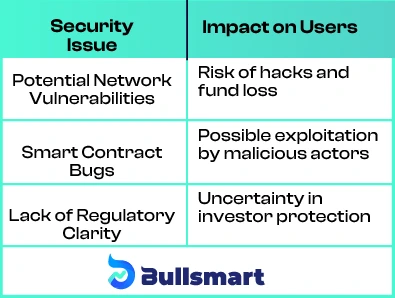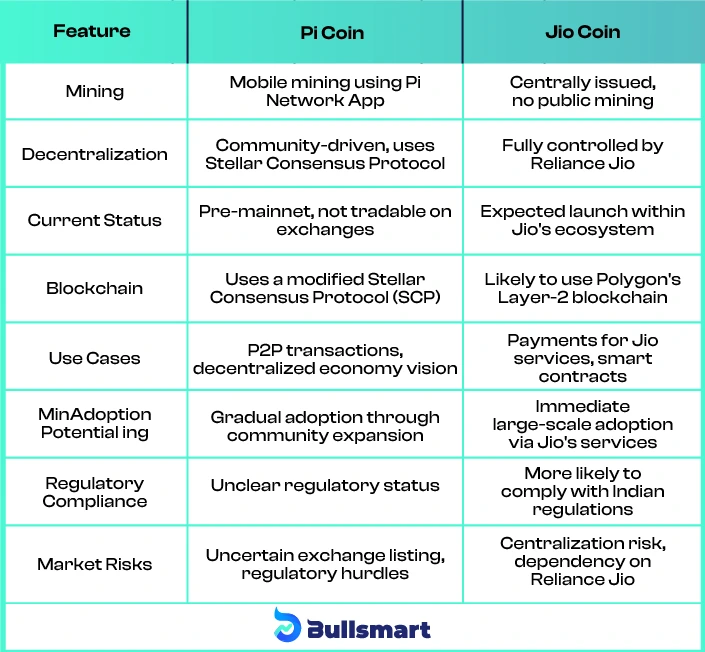The cryptocurrency world has evolved significantly over the years, with new projects emerging to challenge the status quo. One such project gaining massive attention is the cryptocurrency Pi Network. Unlike traditional cryptocurrencies like Bitcoin and Ethereum, the cryptocurrency Pi Network aims to create a decentralized and user-friendly digital currency called the “Pi Coin” that anyone can mine using their smartphone.
Pi Coin is a groundbreaking digital currency that allows users to mine cryptocurrency using their mobile phones. Developed by Stanford graduates in 2019, Pi Network aims to make cryptocurrency accessible without requiring expensive mining hardware.
With its recent launch on February 20, 2025, Pi Coin is now live on major exchanges with the crypto community. This blog explores everything you need to know about the cryptocurrency.
What is the Cryptocurrency Pi Network?
Cryptocurrency Pi Network is a digital currency project developed by a team of Stanford PhDs to make cryptocurrency accessible to everyone. Unlike Bitcoin mining, which requires expensive hardware and high energy consumption, Pi Network allows users to mine Pi coins using their mobile devices without draining their battery.
Pi Network was launched on March 14, 2019, by Dr. Nicolas Kokkalis, Dr. Chengdiao Fan, and Vincent McPhillip. The project aims to build a decentralized ecosystem that empowers everyday users to participate in the digital economy.
The primary mission of Pi Network is to create a decentralized and inclusive digital economy. It seeks to empower individuals by providing them with an easy way to earn and use cryptocurrency without technical expertise.
The network operates on a Proof-of-Humanity consensus mechanism, ensuring that only real users mine these coins and preventing the dominance of powerful mining pools. This approach aims to distribute coins fairly while encouraging mass adoption of cryptocurrency.
Pi Network is currently in the Enclosed Mainnet phase, where users can transfer the coins within the ecosystem. The goal is to transition to an Open Pi Coin Mainnet, where Pi will be tradable on external exchanges, increasing its liquidity and value.
Through community-driven efforts, Pi Network envisions a self-sustaining economy where users can buy and sell goods and services using Pi Coin, fostering real-world utility.
How Does Pi Network Work?
Cryptocurrency Pi Network uses the Stellar Consensus Protocol (SCP) instead of Bitcoin’s energy-intensive Proof-of-Work system. It leverages a trust-based model where users form security circles by adding 3-5 trusted contacts, ensuring network security.
Pi Coin Mainnet Launch
On February 20, 2025, the crypocurrency Pi Network moved from its enclosed mainnet phase (active since December 2021) to an open mainnet. This transition allows the coin to be traded on global exchanges, making it a legitimate tradable asset. Over 10 million users have migrated their mined Pi to the mainnet.
The mainnet launch introduced several key features:
- Decentralized Applications (dApps): Over 100 dApps became active on the platform, spanning sectors such as decentralized finance (DeFi) , AI and gaming.
- External Wallet Compatibility: Users could now transfer the coins to external wallets, enhancing liquidity and usability.
- Enhanced Security Protocols: To protect user assets and data, the network implemented advanced security measures.
Why Pi Coin is Unique
- First mobile-mined cryptocurrency: Makes crypto mining accessible to all.
- Energy-efficient: No need for high-power mining rigs.
- Strong user base: Over 110 million app downloads and growing.
- Decentralized network: Aims to be a widely accepted digital currency on Web3.
Pi Coin Price and Market Performance
Pi Coin debuted at $1.97 but later stabilized under $1. As of February 20, 2025, Pi Coin is trading at $0.91 with a 24-hour trading volume of $811 million. Its fully diluted valuation stands at $8.9 billion, reflecting strong investor interest.
Upon the mainnet’s activation, Pi Coin experienced a substantial price surge. Within the first hour, its value increased by over 36%, reaching a peak of $3.41 on platforms like Bitget. Trading volumes soared, with exchanges like OKX reporting volumes surpassing $100 million in under two hours.
This initial rally was driven by the excitement surrounding the mainnet launch and the influx of new participants eager to engage with the now-tradable asset.
How to Buy and Trade Pi Coin?
With the open mainnet launch, Pi Coin is now available on major exchanges. Here’s how you can buy and trade Pi:
- Create an Account: Sign up on exchanges like OKX, Gate.io, or Bitget.
- Deposit Funds: Add fiat currency or crypto to your account.
- Make the Purchase: Search for Pi Coin and place an order.
- Store Securely: Transfer Pi to a secure wallet for safekeeping.
The Sudden Price Crash
Despite the initial euphoria, Pi Coin’s price experienced a sharp decline shortly after its peak. Within hours, the value plummeted by over 55%, dropping from $1.989 to a low of $0.9123 on exchanges like OKX.
This rapid downturn wiped out the gains from the earlier surge, leading to concerns about the coin’s long-term stability and viability.
Factors Contributing to the Decline
Several interrelated factors contributed to Pi Coin’s sudden price drop:
- Market Dynamics and Volatility: The cryptocurrency market is inherently volatile, with prices often subject to rapid fluctuations due to speculative trading, market sentiment, and external economic factors.
- Technological Challenges and Scalability Issues: As more users participate, the network must maintain performance and reliability without overburdening devices. Any perceived inefficiencies can impact user trust and, consequently, price stability.
- Regulatory Concerns and Compliance Hurdles: The regulatory landscape significantly impacts cryptocurrencies globally. For Pi-Coin, the challenge lies in establishing a compliant framework that aligns with regional regulations.
Withdrawal Challenges Post-Launch
Following the Mainnet launch, users encountered several challenges related to withdrawals:
Issues with Network Congestion
The sudden influx of transactions led to network congestion, causing delays in processing withdrawals.
Delays in KYC Approvals
To participate fully in the open Mainnet, pioneers must complete KYC verification. However, the high volume of verification requests led to processing delays, frustrating users eager to access their funds.
Security Concerns and Their Implications
Security remains a paramount concern in the cryptocurrency space. For Cryptocurrency Pi Network, ensuring the safety of user assets and data is crucial.
While no major security breaches have been reported, the rapid growth and increased activity post-mainnet launch necessitate continuous monitoring and enhancement of security protocols to maintain user trust.

Long-Term Price Predictions
Predicting the long-term price trajectory of Pi Coin involves considering various factors:
- Market Adoption: The extent to which this cryptocurrency is adopted for real-world transactions will significantly influence its value.
- Technological Developments: Ongoing improvements in scalability, security, and functionality can enhance user experience and attract more participants.
- Regulatory Environment: Navigating the complex regulatory landscape will be crucial in determining the very cryptocurrency’s accessibility and acceptance in different regions.
Potential for Recovery
Despite the recent downturn, there is potential for Pi Coins to recover:
- Community Engagement: A strong, active community can drive initiatives that bolster confidence and promote wider adoption.
- Technological Enhancements: Addressing scalability and security issues can improve the network’s robustness, making it more appealing to users and investors.
Pi Coin vs. Jio Coin: Which is Better?
In India, two digital assets—Pi Coin and Jio Coin—are generating significant interest. While both are still in their early stages, their visions and potential applications differ greatly. Pi Coin focuses on decentralization and community-driven mining, whereas Jio Coin is expected to integrate into Reliance Jio’s vast digital network.
Mining and Accessibility
Pi Coin enables users to mine coins using a mobile app with minimal energy consumption, making it widely accessible. In contrast, Jio Coin is expected to be centrally issued by Reliance Jio, meaning no public mining will be allowed.
Adoption and Market Reach
Pi Coin has built a global user base of over 47 million people, relying on community adoption. However, it is still in the pre-mainnet phase and not tradable on exchanges. Jio Coin, backed by 450+ million Jio users, has a massive built-in audience and could see instant adoption once launched.
Key Differences Between Pi-Coin and Jio Coin

Final Verdict: Which Coin Has More Potential?
Both Pi-Coin and Jio Coin have unique strengths and challenges:
- Pi-Coin is community-driven, decentralized, and focuses on global peer-to-peer adoption. However, it faces uncertainty regarding exchange listings and regulatory approval.
- Jio Coin is corporate-backed, has instant adoption potential due to Reliance Jio’s ecosystem, and will likely be regulator-friendly. However, it may remain centralized, limiting broader crypto-market appeal.
Ultimately, the better investment will depend on whether users prefer decentralization and global adoption (Pi-Coin) or corporate-backed stability and mass adoption (Jio Coin). The coming months will reveal how these coins develop within India’s evolving cryptocurrency landscape.
The Future of Cryptocurrency Pi Network
The future of cryptocurrency Pi Network looks promising, with ongoing developments aimed at making it a widely used digital currency. Key future milestones include:
- Decentralized Exchange (DEX) Integration – Allowing users to trade Pi-coins seamlessly.
- Smart Contracts Implementation – Expanding the use cases for Pi within DeFi applications.
- Enterprise Adoption – Encouraging businesses to integrate Pi payments into their operations.
If Pi Network successfully achieves these goals, it could become a significant player in the cryptocurrency industry.
Conclusion
Cryptocurrency Pi Network is an innovative digital currency project that aims to make cryptocurrency mining accessible to everyone. With its unique approach, growing community, and future potential, Pi Network has captured the interest of millions worldwide.
However, its long-term success depends on its ability to transition into a fully functional and widely accepted cryptocurrency.
As the project progresses, investors and users should stay informed and evaluate its development carefully. Whether it will revolutionize the cryptocurrency industry or fade into obscurity remains to be seen, but for now, cryptocurrency Pi Network continues to attract attention as a promising digital asset.
For those looking to diversify their investments beyond cryptocurrencies, considering one-time mutual funds, Systematic Investment Plans (SIPs), and the best-performing stocks can be a great way to build a balanced portfolio. Investing in these asset classes can help mitigate risks associated with the volatility of digital currencies while ensuring long-term financial growth.
Disclaimer: Investments in securities market are subject to market risks. Read all the related documents carefully before investing.
FAQs
Does Pi coin worth anything?
Yes, Pi-coin has established its presence in the cryptocurrency market with a quantifiable value. Following its Open Mainnet launch on February 20, 2025, this became tradable on major exchanges, allowing users to buy, sell, and trade the coin. Its value is subject to market dynamics, including supply and demand factors.
How much is 1 pi-coin?
As of February 21, 2025, 1 Pi-Coin is valued at approximately $0.6628 USD. Please note that cryptocurrency prices are highly volatile and can change rapidly.
How much is 1 pi in rupees?
The value of 1 Pi-Coin in Indian Rupees (INR) varies based on the current exchange rate between USD and INR. As of February 21, 2025, 1 Pi-Coin is approximately ₹57.46 INR.
Is Pi Coin legal in India and other countries?
Yes, Pi-Coin is legal in most countries, including India, as cryptocurrency is not outright banned. However, regulations vary across regions. India currently lacks clear regulations on Pi-Coin, but as of 2025, cryptocurrency taxation applies. Users should check their country’s crypto compliance and KYC requirements before trading Pi-Coin.
Can I withdraw and sell my Pi Coin after the Mainnet launch?
Yes, after the Pi Coin Mainnet launch on February 20, 2025, users can withdraw and trade Pi on exchanges like OKX, Bitget, and Gate.io. However, KYC verification is required before withdrawals. Due to high demand, some users are facing delays in transactions and KYC approvals. Always check your exchange for withdrawal options.
Will Pi Coin price increase in the future?
Pi Coin’s future price depends on adoption, exchange listings, and regulatory clarity. If businesses start accepting Pi for transactions and decentralized apps (dApps) grow, its value may increase. However, market sentiment, investor interest, and network upgrades will play a huge role in determining whether Pi Coin rises beyond its current price of $0.91.

